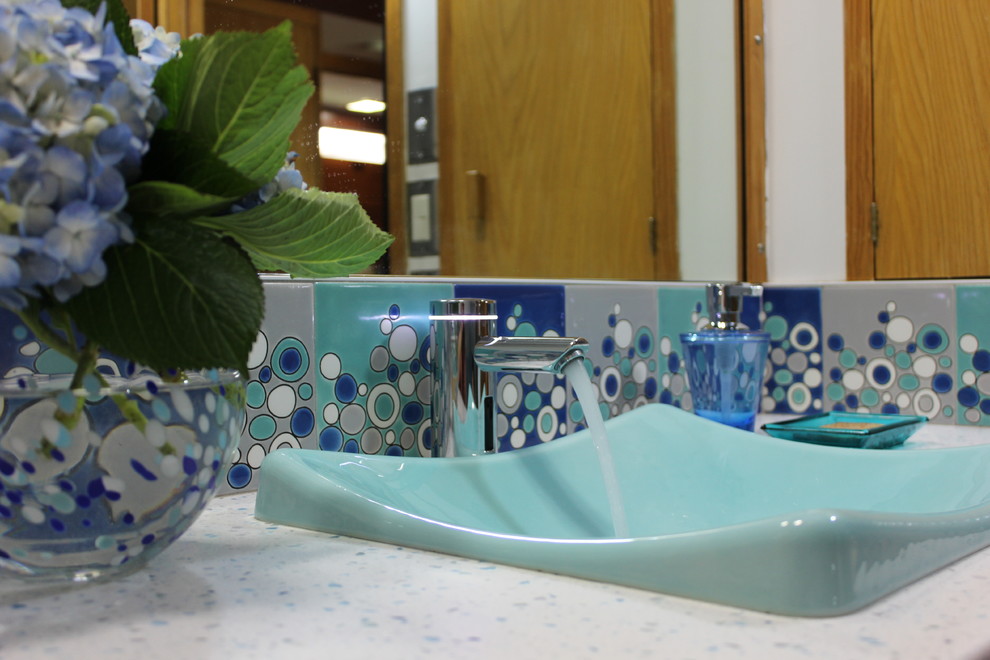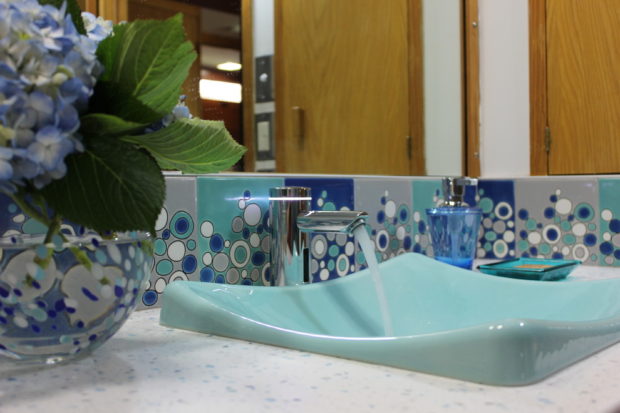Covid-19 has certainly turned our lives upside down and changed the way we do a lot of normal, everyday things. The way public facilities are handling these changes has become critical in fighting the spread of the disease and ensuring a safe post coronavirus transition. In these circumstances, it is clear that the way public or commercial bathrooms used to function is far from ideal. While they were never the peak of hygiene, in these times, poor design choices that lower hygiene levels in these spaces can become nothing less than a public hazard. Rethinking their design is thus not an optional upgrade, but rather, a necessity. Here are a few ways in which the pandemic has changed and will continue to change bathroom design.
No-touch design
Hand washing has become more important than ever but one touch is enough to undermine all our efforts at keeping our hands virus-free. Turning off the faucet after washing our hands or touching the door handle as we walk away do little to stop the spread of the coronavirus. In addition, few people would actually touch the flush button in a public toilet, to begin with, which means they either skip this step or use their feet to do so – both of which options lower the hygiene standards of the establishment. While public bathrooms managed to function like this for a long time, it is high time for a change. A bathroom design that allows for as little physical contact as possible with surfaces that could potentially house germs is thus going to become more and more widespread. Contact-free design is not only safe but also modern. Motion-sensor faucets eliminate potential water waste as they cannot be left on. Automatic toilet lids keep hygiene standards high and cut down on airborne contaminants by miles. All of this is going to improve people’s bathroom experience and keep the public safe.

Photo by Innovate Building Solutions
Stopping airborne contaminants
Invisibly and visibly dirty surfaces are not the only “threat” in public bathrooms. The fact of the matter is that bathroom air can be incredibly dirty and modern public bathroom design needs to address this issue. Toilet plume is mainly caused by flushing the toilet without closing the lid first. Many public toilets of the past did not even have lids to be closed, which needs to change. Still, it is difficult to make people close the lid manually, which is where automatic toilet lids come in, as we already mentioned. Another way to contain the airborne contaminants would be doing away with stalls that have an opening at the top and the bottom since these allow toilet plume to travel all over the bathroom with every flush. Instead, closed stalls with great ventilation systems need to be implemented. Finally, as you might have already guessed, ventilation is also critical – constant ventilation with outdoor air will dilute contaminants and make the bathroom air considerably cleaner.
The issue of cleaning
In order to keep hygiene standards high, bathroom design needs to take cleaning into consideration. Needless to say, simplistic designs that are easy to keep clean are of the essence. However, that is not all. The materials used in the design can also contribute to better hygiene in the bathroom. For instance, commercial bathrooms should implement sinks with quartz countertops – this material is naturally non-porous, which makes it hard for bacteria to grow on it. This renders this material ideal for bathroom settings. There are also antimicrobial finishes available which, similarly, also prevent bacteria growth so they are recommended for surfaces that are to be touched often. An even more modern approach to keeping bathrooms clean in the post-coronavirus world would be installing automated, self-cleaning toilet cubicles. Some of these are already present in cities around the world, however, improving them and implementing them more widely could provide a solution to public bathroom cleaning for good.
Hand drying dilemma
When designing a commercial bathroom, besides hand washing, hand drying also needs to be given some thought. Washing our hands without drying them properly will hardly be effective and will only keep us safe from germs until we touch something. Wet hands are like magnets for bacteria, so it’s essential that public and commercial bathrooms provide the right hand-drying options. Some people swear by paper towels, while others prefer hand dryers. Both of them have their advantages and disadvantages, so things like the amount of traffic your bathroom gets and your concern for environmental-friendliness will all play a role in your decision. What’s important to remember is that a hand dryer is not innately unhygienic as long as the bathroom space is properly ventilated. A high-performance hand dryer is both more economic and more effective, but if your small bathroom is only used by a couple of people, you don’t have to go all out.
Photo by BY DESIGN Builders
Layout and arrangement
The coronavirus has changed how we use certain public spaces and facilities all around the world are working on managing traffic in a safe manner. Commercial bathrooms can do the same. The layout, shape, and arrangement of the bathroom can all play together to create a flow of traffic that minimizes contact. First of all, we have already talked about making public bathrooms as contactless as possible. Since door handles are a critical point, post-coronavirus bathroom design is working towards eliminating doors in creative ways. For instance, S-shaped bathrooms allow for the same level of privacy without anyone having to touch a door handle upon entering. Designs that allow for one-way traffic are also notable as these minimize face-to-face contact. Finally, we might see more and more genderless bathrooms that intend to optimize the amount of traffic bathrooms get and prevent crowding in women’s bathrooms that is a common issue during larger events.
Photo by Inspirations Kitchen and Bath
The appearance of the coronavirus has highlighted the many shortcomings of commercial and public bathrooms that need to be dealt with as soon as possible so that people can safely return to the public. The aforementioned design changes can drastically improve the hygiene standards and change bathrooms for good.

